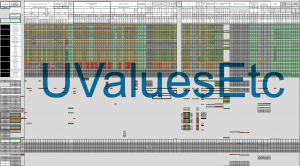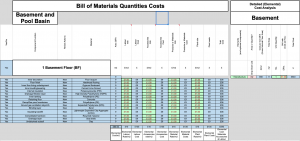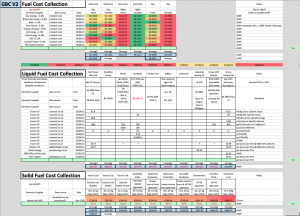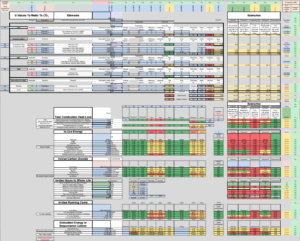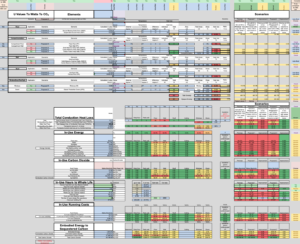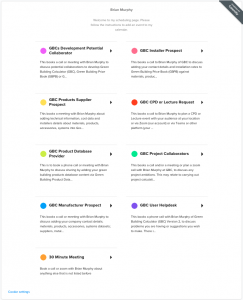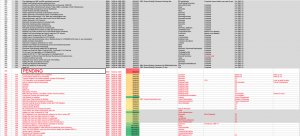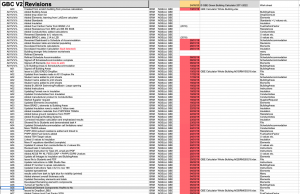Green Retrofit Calculator (GRC) Version 1
Reproduced from Green Apple Award 2023 Application
- A very brief introduction to Green Retrofit Calculator (GRC) Version 1.
- BrianSpecMan created GRC because he wished that Building Designers could thoroughly analyse their own designs and enable energy performance and cost-based design and specification choices.
- It invites the users to set U value Targets, helps with choosing between legal minimum, client ambition, and robust energy standards, cognoscente of the needs of historic fabric and moisture permeability.
- It allows the user to assemble their building’s elements and drill down to functional components which can be replaced by materials and products.
- It calculates all your U and R values, will do energy demand calculations at building, room and element level, and show if targets are met and calculate embodied and sequestered carbon
- By choosing the fuel to heat the building will report on in-use carbon.
- Because violet cost planning has habitually driven project towards low cost despite client ambition to invest well, GRC has its own bill of materials, quantities, labour, costs that are dynamically linked to the elemental assemblies, change one thing and the whole updates dynamically.
- It allows the user to trial and compare spending money on insulation and higher specification window upgrades and see the proportions of energy lost through opaque and glazed elements of construction.
- Through users own product searches and recent tender information users can populate the bill of materials.
- They will be able to do their own cost planning, pre-tender checks and post tender evaluation to spot incompetent or ‘kamikaze’ tenders, to try to avoid the perpetual race to the bottom, inevitable cost planning in disguise as value engineering, substitution and the infamous performance gap.
- This is the first of 50 planned development versions over future years the plan is to add static condensation checks, overheating calculations, thermal mass, thermal bridging and full life cycle assessment of the existing building and interventions.
- Better more comprehensive readymade elemental assemblies, materials and product datasets will be added and sought to ensure this gets to be as good as it can be.
- As we all know BIM ‘Better Information Management’ has been making all kinds of promises about ability to ‘interrogate the data’, ‘Green BIM’ etc., but its a long time coming and GBC is BrianSpecMan’s response to the chasm waiting to be filled.
- Initially GRC is Building Information Management without Building Information Modelling (mathematic modelling not Computer Aided Drawing CAD modelling); one day GRC will become that App.
- In the meantime buy-now and help fund its development and by engaging with it help prolong human occupation of a rapidly ailing planet. https://GreenBuildingCalculator.uk
What did the project involve doing?
Making Green Building Calculator (GBC) a singular multifunctional design and decision tool which thoroughly interrogate a building design for professional users.
- Bringing together numerous of my standalone Excel calculators
- Whole Building Energy and Carbon in use calculator
- Whole Building Embodied Energy Embodied Carbon, sequestered carbon calculator
- Elemental Comparison Calculator
GBC Version 1 took 440 hours to create and launch,
- The more hours GBC spend the less hours users need to do the same tasks themselves
- In GBC’s view: perfection is not the enemy of good
- GBC includes both simplistic and detailed tables in many worksheets
- Many more hours will go into adding more functionality over the following months/years.
- Over 50 versions are envisaged already, more will be added as GBC progresses
- GBC welcomes suggestions for improvements/corrections (See feedback form)
- GBC welcomes your priorities for development versions (See survey form)
Bespoke Version B2 took 700 hours to create (Becomes GRC Version 1)
- It is designed to address existing building refurbishment “retrofit”
- STBA Sustainable Traditional Buildings Alliance are developing it into Options Appraisal Tool
- Extracted from GBC to become stand alone GRC V1 Green Retrofit Calculator Version 1
- What has been learned in this development have already started being added back into to GBC V3
GBC Version 2 has taken 1750 hours of development,
- Announced at Futurebuild 2022 on 1st March 2022
- Launched 20th April 2022
Bespoke version B6: 850 Hours (Becomes GRC Version 1)
- Interreg Energy Pathfinder project specific development
- 2 Scottish Island Options Assessments 8 properties and 6 surveys
- Required additional development (beyond B2) to address:
- other building types
- other elements (party walls and party floors)
- methods of construction (concrete walls and roofs)
- scenario optioneering and recording
- Survey printed sheets
Green Retrofit Calculator Version 1
- After Interreg Project:
- Survey smart tablet interface to feed any building type into calculator
During development I will investigate it becoming a BIM App, to do all that (CAD+BIM) hype claims is one day possible, but still shows little sign of materialising:
- To interrogate the BIM model and do full cost, energy and full environmental analysis
CAD+BIM=3D Computer Aided Design + Building Information
Why did you do it?
I want clients with aspirations and objectives for a Healthy, Environmental, Useful building:
- To know they can engage a building designer who has the tools and skills to meet their brief
- To be able to invest well and get what they want; not be driven down the business as usual cost cutting route
- To know that their environmental design will survive all the way to completion on site
I want Cost Planners & Quantity Surveyors to:
- Do Value Engineering not cost cutting disguised as Value Engineering;
- Create the ‘Green Building Price Book’
I want
- multi-functional materials, products and systems to replace singular function alternatives and succeed in Value Engineering processes
- Specification Substitution to be done with all facts and figures available about the consequence of every change, other than just cost savings for the contractor or client
I want Environmental consultants, energy advisors:
- to model buildings, find their weaknesses in terms that building designers cannot continue to ignore
I want building designers to be able to:
- Do their own Cost Planning without a QS, based on the cost of doing it greener and better, not just cheapest wins every time
- Immediately understand the environmental impact of their construction or refurbishment methods and make better informed choices of materials or products
- Compare alternative scenarios easily and quickly and to begin to build an understanding of the consequences of their choices and in time be able to intuitively choose lower impact methods
- Intelligently interrogate the bill of materials and do environmental analysis on the fly.
- Access generic materials and product datasets at their fingertips to adopt, apply and interrogate designs
- Know where a product was invented to be used and not risk its inappropriate application
- Close the performance gap: energy, airtightness, etc.
- Have access to competent elemental assembly datasets to choose from and adopt or adapt competently, if in the absence of know-how to assemble their own.
- Have multi-functional tools that interrogates the same building model/dataset that they only have to build once
- Submit to architectural competitions and awards that insist on embodied energy, embodied carbon and sequestered carbon and energy and carbon in use, as part of the criteria for success with an appropriate weighting.
I want tenderers and constructors to:
- be able to price the job properly, not chasing some false economy cost plans,
- be paid the right price for the right job
- allow trades people to have the time to care and do a competent job using proper materials
- to ensure the job is a ‘proper job’ for the designed life of the building
I want BIM to live up to its expectations and hype and to do all the wonderful things I want to be able to do
What Did it Cost and where did the money come from?
Costs:
- GBC V1 took 440 hours to launch initially in 2017-18 and during COVID-19 lockdown, all at GBC expense.
- At National Minimum Living Wage = £4k.
- GBC V2 took 1750 hours to launch
- At National Minimum Living Wage = £17k.
- In addition £8k creating a marketing and delivery mechanisms, videos, website and social media.
- Many exhibitions: £10k
- GBCB2 Bespoke development for STBA 700 Hours
- GBCB6 Bespoke development for Interreg Energy Pathfinder 850 hours
Income:
- Total income from sales of GBC V1 & V2 = £3k
- Total income from sales of GRC V1 = £0
- Bespoke B2 development for STBA/HES = £2k
- Bespoke B6 developments for HES/Interreg Energy Pathfinder: £1k
- Directors Loan to fund project: with low expenditure during COVID-19 lockdown has allowed the time to develop GBC & GRC.
Future development will depend upon user purchases, prices are set low to encourage purchase and enable rapid adoption and deployment on projects.
- Purchase options include one off or per annum subscriptions
- Student Architect (and other disciplines): £4.88
- University or Course Tutor/Lecturer (any discipline): £8.88 (to show or demonstrate)
- University: to hand out to one cohort: £98.88
- Graduate Architect (and other disciplines): £8.88
- 1 – 5 person Architects practice (and other disciplines): £48.88
- 6 – 10 person Architects practice (and other disciplines): £78.88
- Larger Architects practice (and other disciplines): £98.88
- Self-Builders: Wales TAN6 OPD: £4.88
- Self-Builders: Others: £48.88
- Charities: £4.88 (pending)
Who and What Benefited?
- All users will get a better understanding about the buildings they design and will occupy
- Users will in time get better informed about the environmental consequences of their design decisions becoming ‘Carbon literate’
- Clients being able to see the consequence of short term investment and in long-term building ownership costs
Longer term benefits?
- Our ambition is to build a community around GBE and GRC to build better faster:
- Feedback loops to fix any errors emerging
- Determining prioritisation of developments
- Data sharing on products, materials and elemental assemblies
- Developing bespoke parts of the calculator to the benefit of many
- Obtaining more carbon datasets for labour, transport, waste,
- Developing a CAD BIM interface API
- Developing Graphic User Interface (GUI) and Dashboard
- Wider use of better considered lower carbon materials in the refurbishment of older buildings
- Guidance towards better choice of materials compatible with historic fabric buildings
- Reduced building in use energy, in use carbon and running costs
Enforcement Actions?
- None so far!
- I am are registered under UK Data Protection Act and abide by UK GDPR requirements
- We seek permission to use and adapt data sources, if and where required, pay licenses.
- We may need to collaborate with other dataset owners to bring their functions and data into GBC and GRC
Can other organisations/communities benefit from using GRCV1?
- Most disciplines in the construction industry will find GRC useful
- Clients, building designers, students, technicians, self-builders, engineers, energy advisors, builders can all find something useful.
- More functionality will be added to support them all
- STBA Sustainable Traditional Buildings Alliance & HES Historic Environment Scotland funded the initial development of the domestic user Options Appraisal Tool (OAT) for domestic home owners
- This bespoke development required less level of detail granularity and less elemental assemblies than GBC V1 or V2
- STBA wish to integrate OAT with their exiting and successful Retrofit Green Knowledge Wheel and new Online Survey Tools.
- HES were part of an Interreg Energy Pathfinder (IEP) requiring 8 properties in the Scottish Islands survey, previous and proposed insulation improvement options appraisals.
- This bespoke development required party walls and floors adding back in again
- Development of GRC V1 uses higher levels of granularity
Continuing Professional Development (CPD) seminars have been presented to as many organisations as possible we continually seek opportunities to present to any audience with the ambition to broaden the range of diciplines that are aware of GBC & GRC
GBC & GRC In-House or Zoom CPD Events:
- Wilkinson Eyre Architects
- Saunders Boston Architects
- A is for Architecture
- Caroe Conservation Architects Cambridge
- Green Space Architects
- 5 Architect practices in Teddington
- 1 Conservation Architect in Lincoln
University Lectures:
- Civil Engineers at Hertfordshire University
Exhibitions:
- Futurebuild 2022 Retrofit Stage,
- Futurebuild 2023 Edge and Firstplanit stands
- Self-build & design Show West 2022
- UK Construction Week 2022
- Regen 2022
- Homebuilder and Restoration Show 2023 NEC
- Grand Designs Live ExCel 2023
- Grand Designs Live Sustainability Theatre Seminar Excel 2023
- HiiGURU ‘Meet an Expert’ at Grand Designs Live
- Kingston’s Efficient Homes Show
- Build for the Future: East Midlands @ Lincolnshire Showground
Future Seminars/Exhibitions:
- Grand Designs Live NEC 2023
Conferences & Seminars 2020-2023
- STBA + SPAB 2020 First suggestion of a Retrofit Version of GBC
- Women in Sustainable Rail
- MaD Make a Difference network
- Think BIM Leeds Green BIM 2021
- STBA + SPAB 2021 First showing of what becomes GRC
- TGR The Green Register of Construction Professionals
- HES Historic Environment Scotland
- CIAT Chartered Institute of Architectural Technologists Yorkshire
- RSWL RIBA West Wales
- ASBP Sustainable Building Materials & Products – Databases and Tools
- IHBA Hemp Symposium
- Interreg Energy Pathfinder Conference
- MoD Defense Estates West
- Faculty of Architecture Khartoum Sudan Seminar
The Context
- Architectural education has been too focussed on aesthetics, a private language, philosophical ideas and snappy graphics for end of year exhibitions; that there is a dearth of building materials and construction or retrofit know-how.
- Architectural graduates are inadequately prepared for their career in the real world.
- Architectural Technicians tell me they are just as inadequately prepared.
- Much of the next few decades workload will be about 27 million homes that already exist needing to be deep retrofitted to zero carbon, zero energy and zero cost to live in.
- Over the decades I have seen too many clients willing to invest in better than normal, to create healthy, productive, green buildings, have their wishes evaporate away under their eyes.
- Quantity Surveyors are so focused on cost planning to industry norms and have a mind-set of holding project ransom to cost plans or budgets that do not reflect the clients true ambitions.
- Ambitious designs into tight budgets do not go
- This leads to cost cutting disguised as ‘value engineering’ and substitutions dropping below competency levels; Grenfell being the worst example of these failings
- Tenderers fall into this same mind-set and now habitually tender well below sensible levels of remuneration that forces them to search for every potential to claim for more after the tender and substitute inferior products
- Contractions supply chains are so stretched financially that 3 months delay before payment is the new normal
- Fiduciary rules forcing all businesses to make a profit for shareholders means contractors are looking for shortcuts; quality and competency inevitably suffers.
- Tradesmen are unable or not permitted by site management to have time to do their jobs in sequence, to competent level, let alone a workmanlike manner, no time to care.
- The Construction Industry is suffering from such high levels of mental stress leading to many suicides.
- Health and wellbeing in the workplace are on the agenda but if 3 months delay on payments persist it is obviously only lip service.
- GBE took advantage of the protracted COVID-19 pandemic to merge and develop existing Excel calculators and launched GBC V1 in June 2020 and GBC V2 in April 2022, and the third year to develop GRC Version 1.
- The aim was to help designers to engage robustly with energy efficiency and in use carbon, but with an integrated Bill of materials, quantities, costs the designer can engage the client in value for money and whole life cost discussions and potentially spend more money on insulation and better windows to reduce running costs.
What has been learned and will form part of future development?
- The conversion of the paper based survey to the smart-tablet manual building survey happened after IEP case study project and is being developed for GRCV1
- The addition of the smart-tablet manual building survey shows us a way to introduce any new lines of data to any of the look-up-tables that auto-feed cells of the calculators, these could include:
- Design Office’s own refurbishment Templates:
- House types,
- Retrofit approaches, extensions, attic conversions, alterations
- Methods of construction, details, specifications
- Building use types
- Additional Materials datasets (currently 2200)
- Additional Products datasets (currently 250)
- Additional Insulation datasets (OAT: 20, GRCV1: >150)
- Additional Readymade existing and proposed elemental assemblies (Compartmentation in and out)
- Additional U value, Embodied energy, Embodied carbon and Total carbon targets
- Additional Fuel cost and carbon date (wild fluctuations during Russian war on Ukraine)
- The Risk analysis needs to be continuously developed to address many more methods of construction
- Prospects have asked if GRC can do:
- SAP (Standard Assessment Procedure) for Building Regulations applications
- This month we have initiated discussions with a potential Intern specialising in this area
- To investigate the potential, developed a specification and potentially carryout the work
- EPC (Energy Performance Certificate) for house sales and rentals
- GRC has the potential to be accurate unlike EPC
- Existing Buildings with new extensions, conservatory, porches, etc.
- This will probably mean merging GBC and GRC
- 50 developments are planned including waste, energy, water,
- SAP (Standard Assessment Procedure) for Building Regulations applications
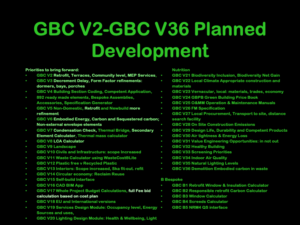
- In order for GRC to become and remain vital we have planned a number of websites to serve users of and automatically feed GBC & GRC:
-
- Green Building Product Data Collection

- Green Building Price Book

- Green Building Readymade Elemental Assemblies

- Green Building Robust Specification
-
- In order for GRC to become and remain vital we have planned a number of websites to serve users of and automatically feed GBC & GRC:

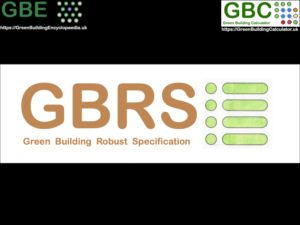
-
-
- Green Building Materials Product Passport
-
-
-
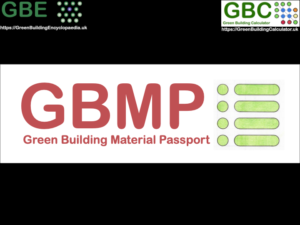
- Green Building Method Statement
-
Accreditations or Awards gained
- GRC V1 is not yet launched and has not received any awards or accreditations
- GBC V1 & V2 has achieved a number of awards or short listings:
- Green Apple Environment Award 2020 National Silver for Carbon Reduction
- Construction Computing Awards ‘The Hammers’ 2020 Finalist
- World Society of Sustainable Energy Technologies Innovation Award 2020/21
- LSI Leeds Sustainability Institute RISE awards 2021 Education & training, Highly Commended
- Corporate Live Wire Central England Prestige Awards 2020/21 Winner
- SME News UK Enterprise Awards 2022
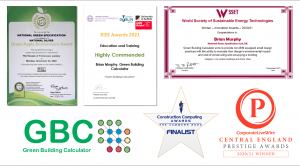
Project Achievements?
- GRC V1 has not been available for long enough to see results yet
- Interreg Energy Pathfinder highlighted and offered opportunities to develop new parts of GBE B6 that became part of GRC V1
- No other quantities yet, we may be able to encourage users to share project improvement data in due course
- By its low cost has potential to be available to many users
- It has the potential to influence choice of materials and construction methods towards low environmental impact materials
© GBE GBC GRC GBL NGS ASWS Brian Murphy aka BrianSpecMan ***
30th May 2023 to 15th August 2023
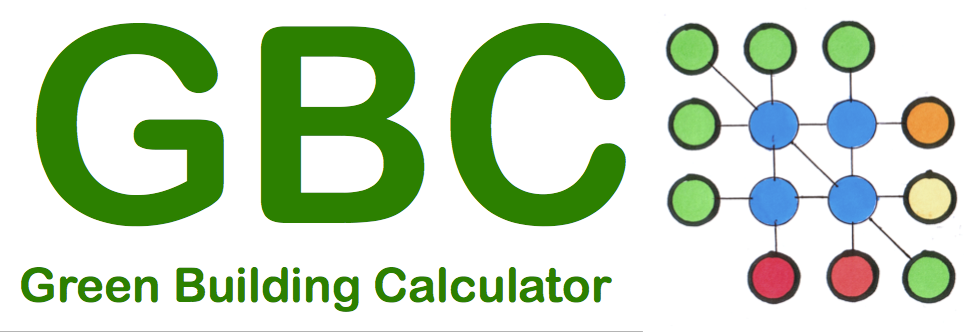
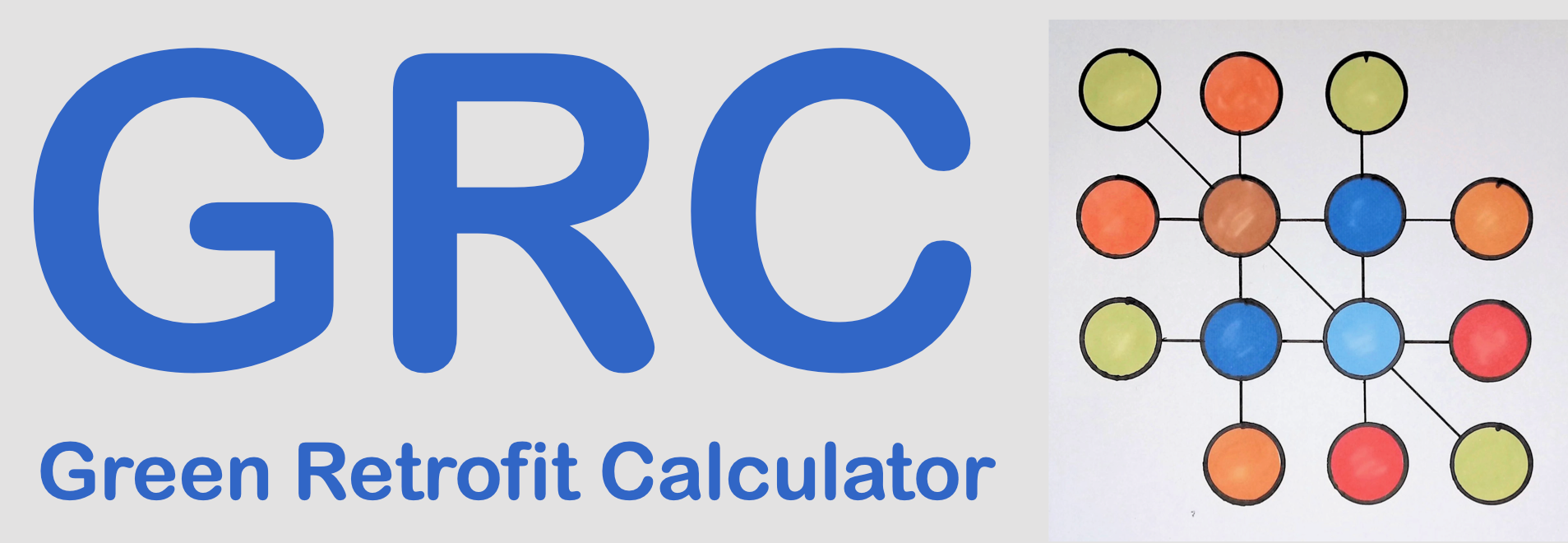
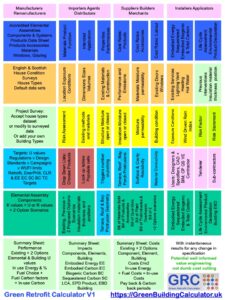
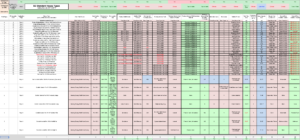
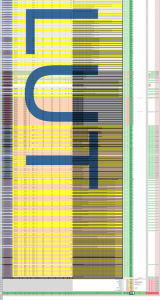
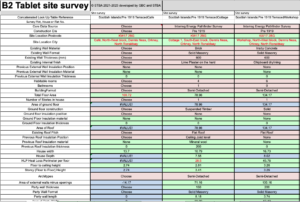
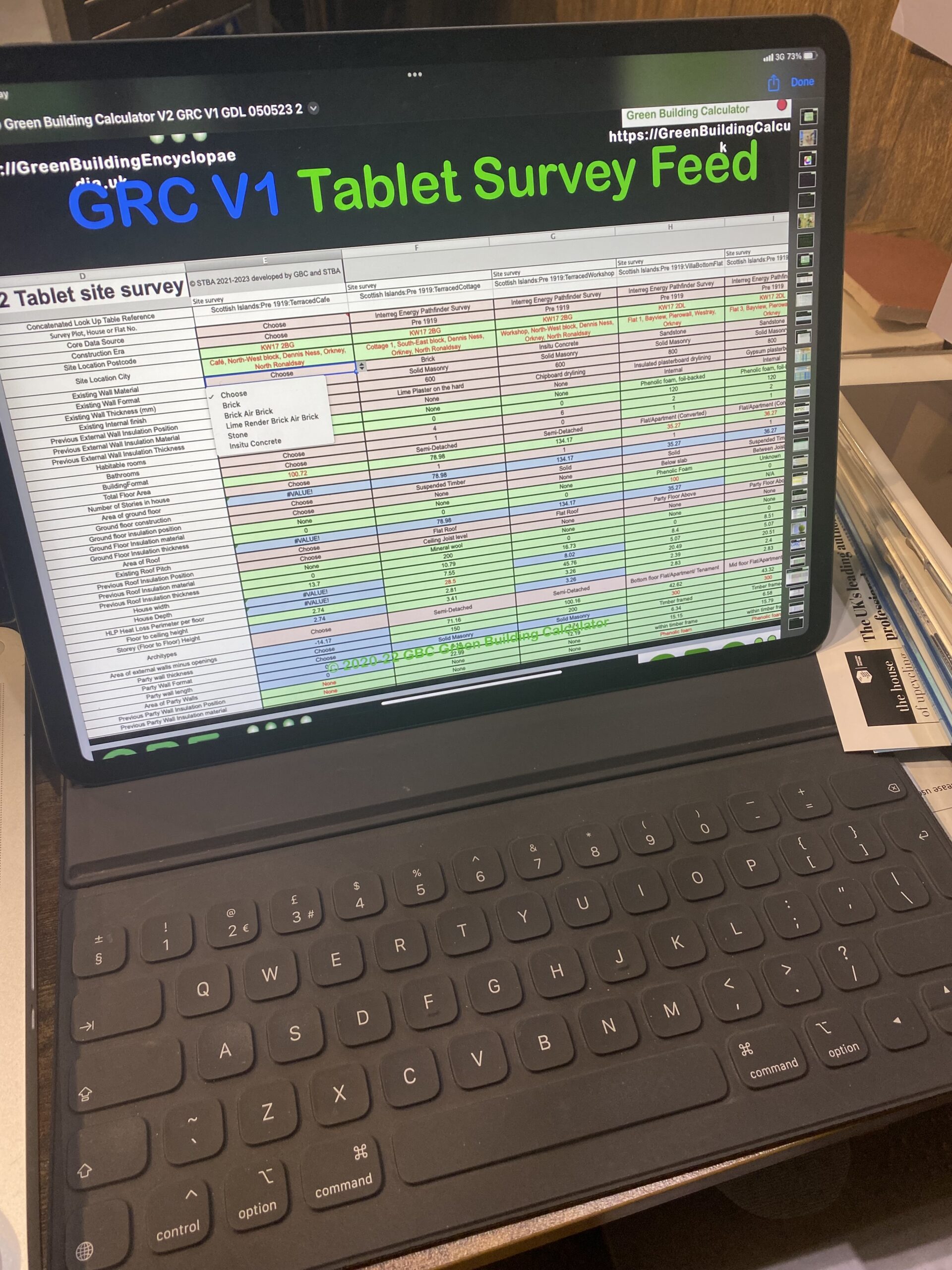 Tables of regulation, design standards and campaign ambitions to set targets
Tables of regulation, design standards and campaign ambitions to set targets